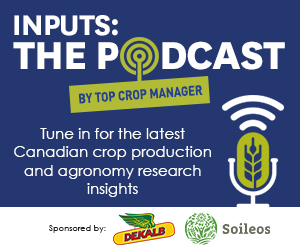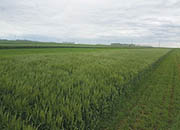| |
| |
 |
 |
| |
 |
|
@{mv_date_MMM d, yyyy}@ |
|
| |
 Vacancies in Quebec and BC are at approximately six per cent, whereas they are below 4.5 per cent in Prairie provinces.
» Read more...
Vacancies in Quebec and BC are at approximately six per cent, whereas they are below 4.5 per cent in Prairie provinces.
» Read more...
The trials will help researchers better understand the role that oats play in disease protection.
» Read more...
Yields and quality vary across the provinces and regions, due in part to varying weather throughout the spring and summer.
» Read more...
|
| |
|
| |

Pulse crops have made waves in Western Canada in recent years, and for good reason – they’re high in protein and pull their weight in a rotation by fixing nitrogen. Like any crop, there are agronomic challenges, but there’s growing potential.
In this episode, Robyne Davidson, pulse crop specialist and research scientist at Lakeland College, shares agronomic insights about how well pulse crops performed in the province this season, and gives updates on the research pipeline.
» Listen now... |
| |
|
| |
 Clubroot-resistant cultivars are key to managing this major canola disease. But the pathogen excels at evolving to new races, or pathotypes, that can overcome a cultivar’s resistance. So, breeders and the pathogen are locked in a back-and-forth battle as breeders add new resistance genes to canola and the pathogen evolves to new pathotypes. Now, Saskatchewan researchers are looking into a new, more durable type of clubroot resistance, with a goal to optimize the gene editing tool known as CRISPR for efficient canola breeding.
» Learn more...
Clubroot-resistant cultivars are key to managing this major canola disease. But the pathogen excels at evolving to new races, or pathotypes, that can overcome a cultivar’s resistance. So, breeders and the pathogen are locked in a back-and-forth battle as breeders add new resistance genes to canola and the pathogen evolves to new pathotypes. Now, Saskatchewan researchers are looking into a new, more durable type of clubroot resistance, with a goal to optimize the gene editing tool known as CRISPR for efficient canola breeding.
» Learn more... |
| |
 Farm-saved seed is a common practice for wheat growers on the Prairies to cut costs. But previously, there has not been a great deal of independent research on how farm-saved seed performs in comparison to Certified seed. Recent research now looks at the difference in order to know if this is the best practice, or if farmers should introduce Certified seed on their operations more often.
» Learn more...
Farm-saved seed is a common practice for wheat growers on the Prairies to cut costs. But previously, there has not been a great deal of independent research on how farm-saved seed performs in comparison to Certified seed. Recent research now looks at the difference in order to know if this is the best practice, or if farmers should introduce Certified seed on their operations more often.
» Learn more... |
| |
|
| |

|
| |
| |







